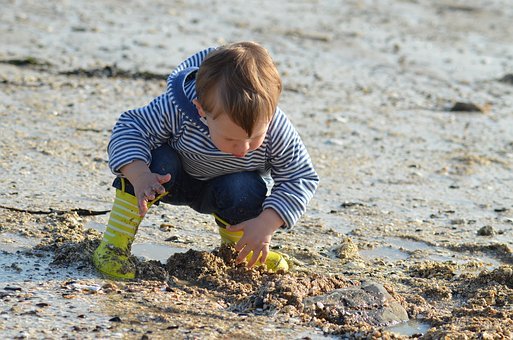Mental skills such as making rational decisions, reasoning, making plans, and determining priorities, which make human beings different from other living things, are fed to the brain by information coming from the outside world. The flow of information from the outside world takes place through the senses. All intellectual, emotional and social competencies of the individual are formed as a result of processing information in mental processes through the senses.
The first years of life are an extremely critical period in terms of both brain development and the development of skills to use the senses. From birth, the child recognizes and makes sense of objects by putting them in his mouth, listening to their sounds, touching, observing, in short, using the senses effectively. During this period, the child should be sensibly stimulated for social, emotional, mental, physical and language development, and have the opportunity to encounter stimuli that stimulate different sensory channels. Children who do not have the opportunity to use their senses effectively during critical developmental periods in early childhood cannot show sufficient sensitivity to the information provided by the environment. As a result of low sensory awareness, their mental processes do not show optimum development. For this reason, supporting sensory development in daily life and integrating sensory development studies into early childhood education programs are vital for the child’s development in all areas.
Today, in preschool education, children are offered many opportunities to support learning with their senses. Playing with sand and water is an opportunity for the child to develop the sense of touch, musical activities, the sense of hearing, colorful art works, the sense of sight of colorful toys, and the different snacks offered at the snacks for the child. Beyond these common applications, the Montessori method brings a systematic approach to sensory development. The applications in this program and the materials used in these applications have been designed considering the fact that learning depends on the flow of information provided by the senses in the natural development process.
Montessori sensory studies enable the child to correctly perceive and describe the characteristics of the stimuli around him, and to determine the differences between the stimuli. The aim of the studies is to develop the ability to distinguish even the smallest differences between these features. Maria Montessori saw that studies targeting only 5 basic senses would not be sufficient for a refined perception system, and also aimed at the development of kinesthetic, thermic, stereognostic and baric senses, which use the basic senses together or form subgroups of these senses.
The kinesthetic sense provides the child’s awareness of his body and movements through his muscles. Skills that require brain-muscle coordination, such as crawling, walking, and the ability to ride a bicycle at later ages, develop with the flow of information provided by the kinesthetic sense. Thermic, stereognostic and baric senses are three different dimensions of the sense of touch. Thermic sense studies aim to refine the sense of heat created by the sense of touch. The feature that distinguishes the thermal sensation from touching is that the heat is perceived not only at the touched point, but also by spreading to the body from this point. Stereognostic sense is the sense that allows to recognize the size and shape of an object by touch, without using the sense of sight. Perceiving an object as stereognostic enables the child to picture that object in his mind. The mental work required by the process of visualizing the information received by touch greatly contributes to the development of the child’s mental skills. The baric sense is related to the perception of weight and pressure. Baric sensory exercises aim to enable the child to distinguish between the weights of objects and the pressure differences they create on surfaces.
An environment in which the necessary stimuli for sensory development is presented to the child and the opportunity to experience with these stimuli should be given. The child will naturally turn to the stimuli around him, and will want to touch these stimuli, take them into his mouth, shake them and throw them on the ground. Allowing the child to satisfy this curiosity in any situation that does not pose a danger to the child supports his development positively. Children may feel the need to do the same thing over and over to refine their senses. Even if the parents feel the need to stop these repeated movements from time to time, they should allow the child and remember that repetition develops the child’s sense of success and mastery of that skill.
Sensory development enables the child to observe his environment better, to perceive the information presented by the environment correctly, to notice the details and to use all this information effectively in his mental processes. Every activity that supports sensory development also supports the child’s memory, attention and concentration skills and forms the infrastructure of many mental skills that he will need throughout his life.
